1969 GAZ M-21 Volga
Yuri Gagarin drove a black GAZ M-21 Volga — and so did the KGB. Where better to experience one than Cambridge, hotbed of a notorious Soviet spy-ring? Words Glen Waddington. Photography Dominic James.
DRIVING A RUSSIAN VOLGA
Russian saloon in the city of Soviet spies
Espionage, not unlike classic car ownership, can take a fair degree of commitment. Take the case of one Harold Adrian Russell ‘Kim’ Philby, who was educated at Trinity College, Cambridge, before becoming a journalist, then moving on to the Special Intelligence Service. He rose to high office during Word War Two and was then appointed First Secretary to the British Embassy in Washington in 1949.
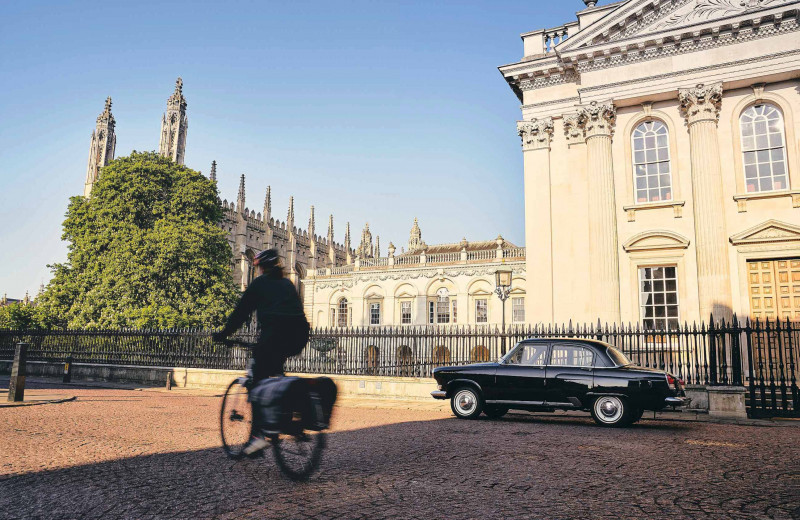
Problem was, he’d already been recruited by the Soviets when an undergraduate and became the leading member of the so-called Cambridge Five, passing secret information to his spymasters in Moscow, the defection of two of his colleagues in 1951 led to suspicions over Philby, but he was exonerated in 1955 — only to be unmasked as a Soviet agent in 1964. Off to Moscow he went, where he lived until his death, aged 76, in 1988.
'Even Yuri Gagarin was entitled to only four cylinders, though he might have gone for the optional high-compression 80bhp version'
And here we are in Cambridge today, with a Russian classic car, the owner of which has certainly demonstrated a huge degree of commitment to the cause. While those of us in Western Europe might have grown up dreaming about an E-type, maybe a Jensen Interceptor, a 911, Esprit, Countach or even a Delta Integrale, things were different on the other side of the Iron Curtain. And Kiril Vitanov recalls the Volgas he loved during his youth in Bulgaria.
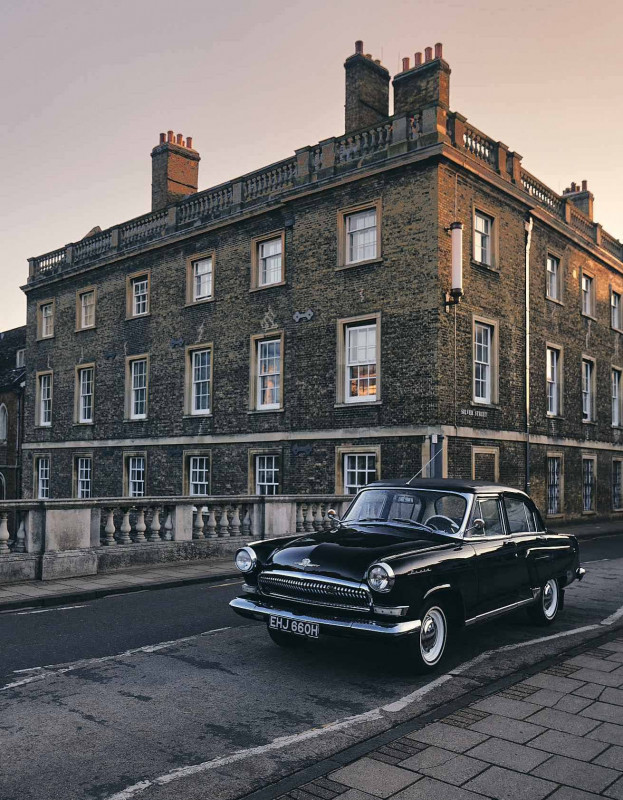
‘I remember my father’s words: “the black Volga is a car for special people. It is Yuri Gagarin’s car, the first man in space,’” he says, while easing his bulky 1969 GAZ M-21 Volga into Cambridge’s quaint and narrow Trinity St. When he was growing up in Sofia, this was what Vitanov yearned to own. His first cars were Warszawas, designed in the Soviet Union and built in Poland. But in 2015 he moved to the UK. And shortly after, his dream came true.
‘It was painted black and this is the original paint,’ Vitanov says of his Volga. ‘You would see Volgas driven as taxis and family cars in Bulgaria, but black ones were always “official” cars, they were the equivalent of the Mercedes-Benz S-Class in all the countries behind the Iron Curtain, this one had been garaged for more than five years and was first owned by a Bulgarian military general. He ordered it and had to wait eight years for it to be delivered. But for me this was always the car of Yuri Gagarin. His favourite car.’
'These are down-to-earth cars: tough, built to withstand rough roads and Russian winters'
Getting the Volga to the UK was not easy; Vitanov had to have it transported via Poland by truck. And this isn’t the sort of car you can source parts for easily in the UK: there are only 18 of them here, after all. Remember what I said about commitment? ‘In 2019 my girlfriend and I went to St Petersburg in Russia, there is a GAZ shop there, where we bought original parts for the interior, they were excited to hear that the car was going to the UK.’
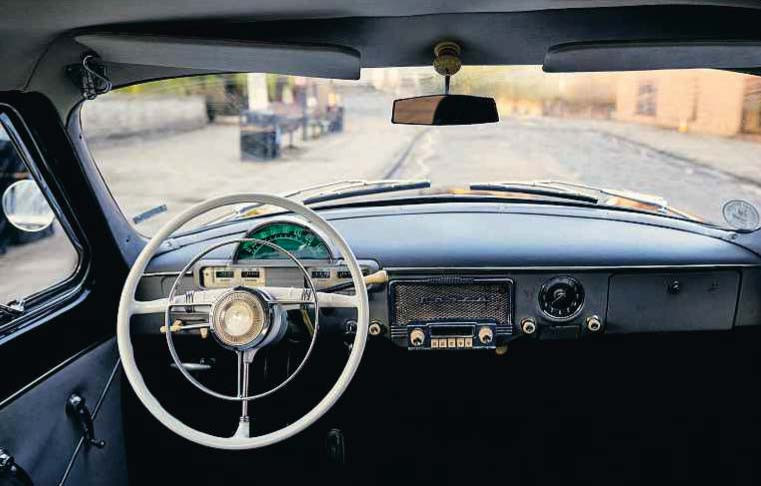
On Bulgarian roads the Volga had covered only 14,000km, but its lay-up had inevitably caused a little deterioration. Once it had arrived, Vitanov got busy, changing the fuel lines and replacing the wiring loom. ‘Finding a new fuel tank was the hardest job,’ he says. Inside, there was new vinyl for the dashtop, plus new (but entirely appropriate) seat coverings. Whitewall tyres helped to keep the ambassadorial look intact, and the paint and bright trim had survived, so the body was treated to a protective ceramic polish. ‘My goal was to keep the Volga as original as possible, just as it was in 1969,’ says Vitanov.
If it looks familiar — and you didn’t grow up fearing the eye of the KGB — then maybe you recognise it from the 1965 James Bond film 'Thunderball, though that was actually the M-22 estate version, the subsequent M-24 featured in Octopussy, later 1980s variants starred in Goldeneye and The Bourne Supremacy, adding just that necessary degree of Eastern European menace. Fans of German rock might have spotted an M-21 rather like this one in Rammsteins Du Hast music video, and a black one starred in the 2009 Russian superhero movie Black Lightning, in which the protagonist fights crime with his 1966 M-21. That one is capable of flight, naturally.
But these are really down-to-earth cars. I don’t mean that in a derogatory way: they’re tough, built to withstand rough roads and Russian winters, capable of being repaired using hand tools, and comfortable enough to be driven long distances. Russia is a big country, after all.
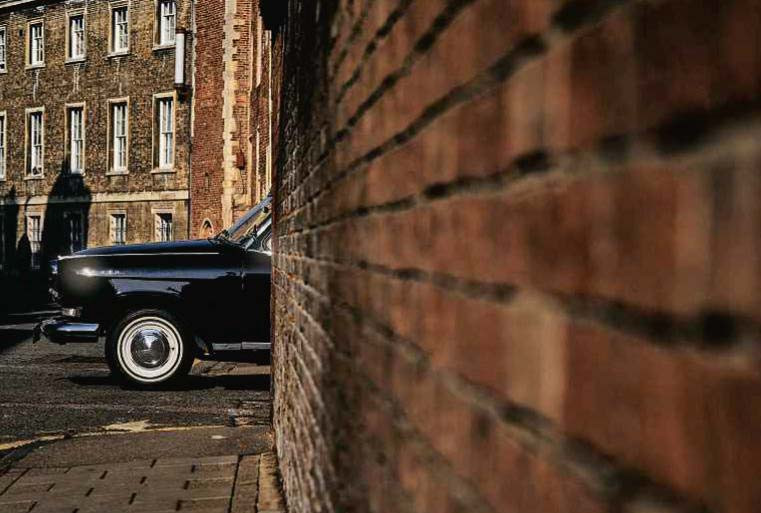
Let’s decode the name: GAZ is an acronym for Gorkovsky Avtomobilny Zavod, which translates as Gorky Automobile Plant, the company was preceded by NAZ, founded in 1929 when it built a version of the Ford Model A. the ‘N’ was for Nizhny Novgorod, or ‘Lower Newtown’ to distinguish it from Veliky Novgorod and because it was downstream of Moscow on the River Volga, that location brought wealth, making it a centre of trade and enabling Nizhny to become the sixth largest city in Russia. During the Soviet era between 1932 and 1990, the city was renamed in honour of the poet Maxim Gorky, the size of the car plant there also earned it the epithet ‘Russia’s Detroit’.
And what we’re looking at here is a substantial six-seater saloon, 190in long, its lofty ride height distorting the proportions to make it look smaller than it is. It’s rather longer than most European saloons of the era, a good foot more stem-to-stern than, for instance, the Ford Consul Mkll it looks a little like from the front — both took their stylistic inspiration from the US. Power came from a newly developed all-alloy 2.5-litre overhead- valve four-cylinder, feeding power to a live rear axle via a three-speed manual transmission.
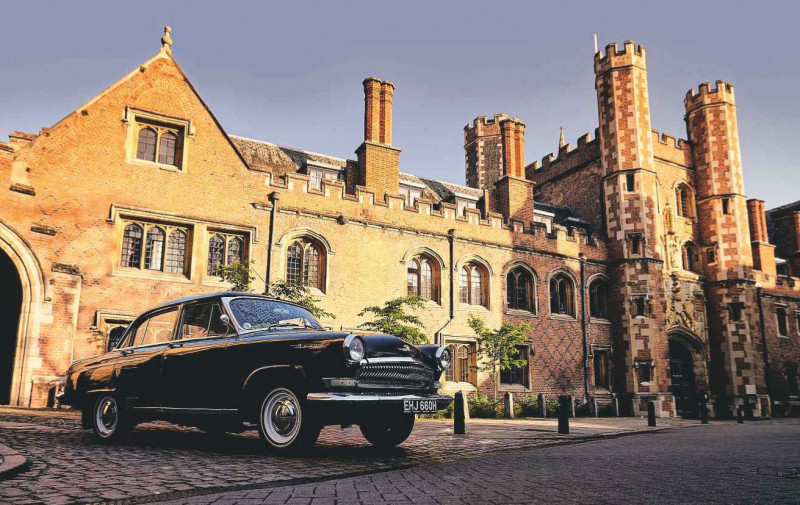
That’s all pretty conventional stuff, though all the cars came with spare parts and two toolkits, a hand-crank and a tyre pump — no government official would have wanted to get stuck in the wilds of the gulags, after all. For similar reasons, it rides high to cope with the more remote Russian roads, the engine was designed for longevity over haste, and rustproofing was unusually thorough, with extensive use of galvanised steel. All of which helps to explain the incredible condition of Kiril Vitanov’s survivor.
The M-21 was launched in 1956, following a three-year gestation as it was developed from a clean sheet by chief engineer Alexander Nevzorov and designer Lev Eremeyev. It was then produced in three series up to 1970, distinguishable by different grilles (horizontal bars, body-coloured vertical slats, toothy chrome) and with subtle refinements along the way, such as telescopic dampers from 1959, replacing the original lever-arms. The M-22 estate body was launched with the third series in 1962.
They developed a reputation for tough, no-frills transport and outstanding durability — demonstrated before launch by a gruelling 5300-mile test trial from Moscow to Crimea and back, that, plus the 9in ground clearance, helped take a Volga to a class win on the thousand Lakes Rally in Finland, and third on the Acropolis Rally in 1959. Vitanov’s car, dating from 1969, is one of the last.
And despite the tiny numbers that remain outside the former Eastern Bloc, the M-21 Volga was exported. Cars would arrive in Antwerp, Belgium, without an engine and with the gearbox in the boot so that Belgian importer Sobimpex NV could finish them for sale in Europe, often fitted with a Perkins diesel engine, the British press praised the M-21 Volga’s high level of workmanship, smoothness and equipment level; notably, a radio was a standard fitting, the Finns referred to it as a ‘tank in evening dress’.
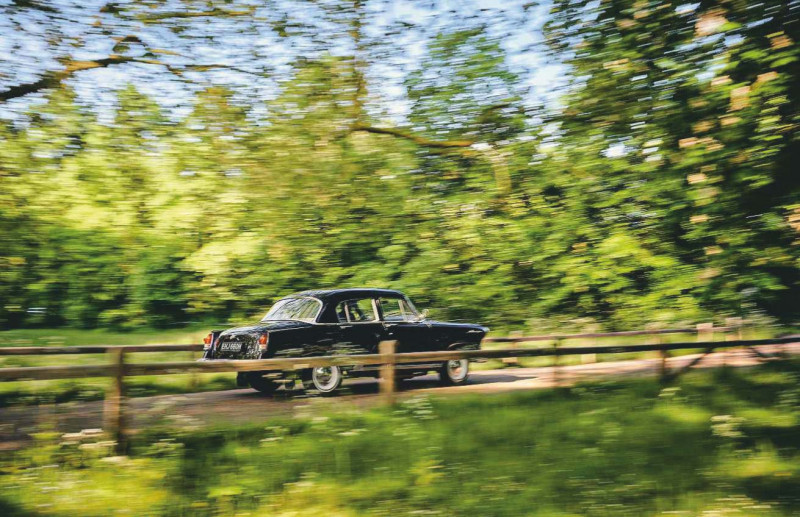
Trinity college is our backdrop, the gentle grandeur of its facades and the bucolic greenery of its grounds at odds with the subversive machinations of its most treacherous alumnus. And, somewhat contradictorily, the Volga would have made a great disguise for any Soviet spy in the UK: most assume it’s an American car. Of course, the reaction here to a black Volga differs from what might have been expected had one come calling in Mother Russia, thankfully.
My turn to drive. Vitanov slides across the bench seat and points out the major controls, which are pretty straightforward: three on the tree, but grab second (towards your chest and down) before slotting straight up into first. It’s smoother that way.
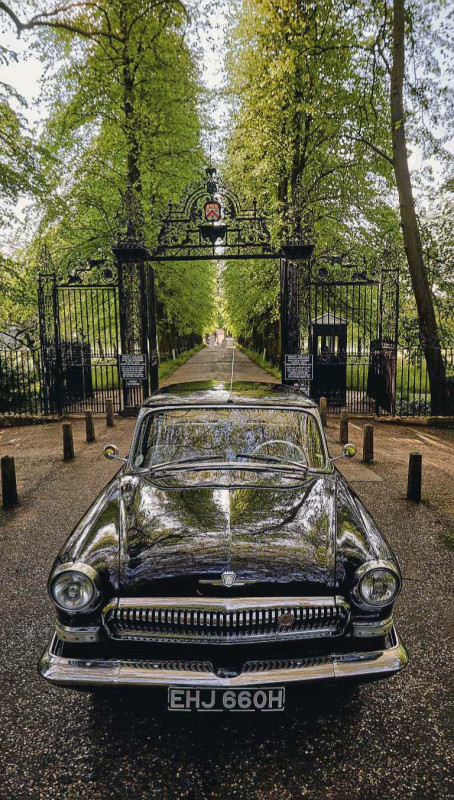
It feels bigger within than it looks from without, with quite an elegant dashboard that’s not a million miles in character from a late- 1950s Merc’s. Sure, it’s a bit dated by 1969 standards, but obsolescence was a concept dismissed by the Soviets, modernisation would likely have resulted in blocky plastic mouldings, and a wholly new car followed in 1970 anyway, here’s a radio in the middle, a big clock ahead of the passenger and an array of secondary gauges before the driver, all charmingly (and appropriately) labelled in Cyrillic script, the best bit is the arc-shaped speedo, fronting a dome-shaped, green-tinted, translucent-backed binnacle, so it’s ‘lit’ from behind and outside. Reminds me of the apocryphal claim that, while NASA spent gazillions developing the Space Pen, cosmonauts used their pencils.
There’s a slightly chattery, busy idle from under the bonnet, light on bass notes so the noise stays quite remote. Mindful of the 75bhp available under your right foot, grab first (yes, via second), pull away and acceleration is stoic rather than brisk, while the chatter gives way to a breathy threshing, overlaying the whine of the transmission, the gears are long so three is plenty, with second ample (and quieter than first) for town work, then you drop easily into top from around 40mph. It takes you up to a cruise, which is calm at 60mph but gets a little blustery beyond.
Steering lightens up once you’re moving; you wouldn’t call it incisive, but neither is it vague. Tip into corners and there’s some roll, but it settles nicely and feels neutral through the turn. Ride comfort is of the type you don’t really notice, which is surely a compliment: neither notably soft nor hard at low speeds, and exhibiting little more than the odd shudder on faster roads. You could certainly imagine gathering significant mileage along gravelly highways while the plains and pine forests of rural Russia slip by. Plenty of space on those roads should the drum brakes need time to bring your speed down.
More power was available, but granted only to KGB officials. For them, there was an M-23 Volga, complete with a 160bhp 5.5-litre V8 from the GAZ Chaika limousine beloved of those in the upper echelons of the Soviet Government (the even larger ZiL was reserved for the very highest office). Only 603 M-23s were built during an eight-year period up to the 1970 demise of this generation of Volga; they were capable of 110mph, so mere mortals were unlikely to be tailed for long before being hauled down. Even Gagarin — the first human in space, and a man accustomed to the 3883.4kN total thrust provided by the four boosters of the Vostok-K rocket — was entitled to only four cylinders, though he might have gone for the optional full-fat high-compression 80bhp version, usually reserved for export.

Once back on Earth, Gagarin quickly became one of the most famous people of his day, yet there is another M-21 Volga owner whose fame (or infamy) shades even his: Donald Trump.
‘I owned the former Soviet diplomatic car from London,’ says Ewen Sergison, proprietor of Doncaster-based Historic race-prep business Avit Motorsport. ‘It had special chrome wingtops for the diplomatic flags, and really looked the part in white over light blue. Problem was, it took up lots of space and I needed a new roof for the workshop. So off it went, in October 2008, to the Brightwells auction. I got £6000 for it.’
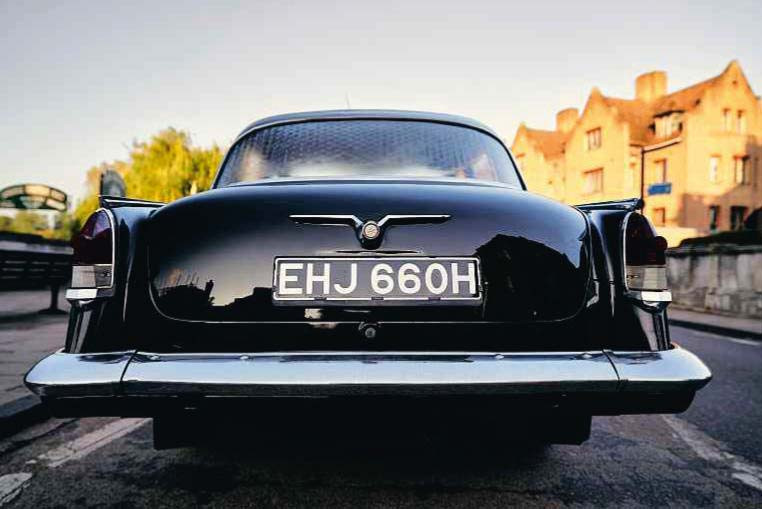
But further news was to come. ‘I got a call a couple of months later, to say it had been sold on for £7500, and I thought, well, fair enough. But then the caller said: “Are you sitting down?” there was a further receipt for £22,500. “It’s going in a container now”, he told me. “It’s off to Donald Trump’s private collection.’”
On that note, we head back into the old city streets, little changed since the days of Kim Philby and the rest of the Cambridge Five, enjoying the Volga’s relaxing gait as it burbles and bimbles over the broken tarmac. To drive it is to gain respect for a car that’s largely unremembered in western Europe, and it deserves better. Over a 14-year career, Russia’s Detroit built 639,478 of the M-21 and its derivatives, and a third of those were exported.
Production of the Volga line finally ended in 2010, though by then it was a GAZ in name only, really being a rebadged version of the superannuated Chrysler Sebring, the production lines for which had been sold by DaimlerChrysler and shipped to Nizhny Novgorod from its Sterling Heights assembly plant in Michigan, USA. Perhaps Donald Trump would have approved; Yuri Gagarin surely would not.
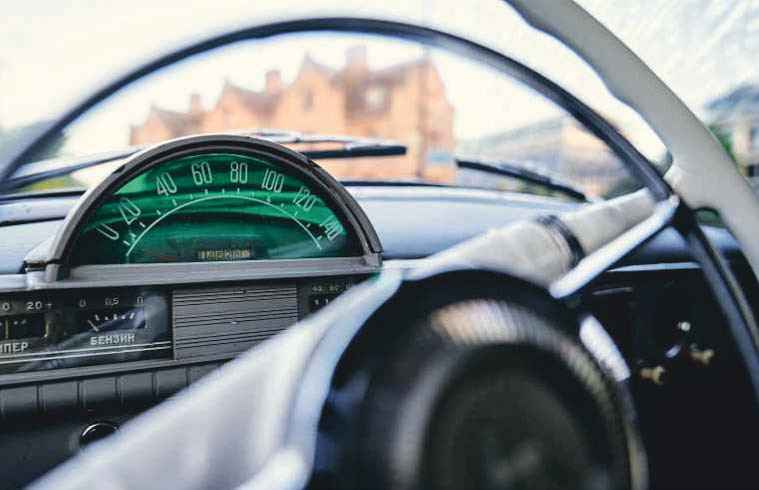
Left, from top Translucent speedometer illuminated by natural light; rear end calls to mind a Mercedes-Benz Ponton.
1969 GAZ M-21 Volga
- Engine 2445cc OHV four-cylinder, single carburettor
- Max Power 75bhp @ 4000rpm
- Max Torque 130lb ft @ 2000rpm
- Transmission Three-speed manual, rear-wheel drive
- Steering Recirculating ball
- Suspension
- Front: double wishbones, coil springs, telescopic dampers
- Rear: live axle, leaf springs, telescopic dampers
- Brakes Drums
- Weight 1463kg
- Top speed 80mph
- 0-60mph 30sec
Clockwise, from top Cyrillic script reads ‘Volga’; big, strong overhead-valve four-cylinder; radio is standard-fit; Trinity College, Cambridge, where spy Kim Philby was recruited by the Soviets.
Left and right Dashboard is simple, elegant and well-finished; styling inspired by early-1950s American saloon cars.


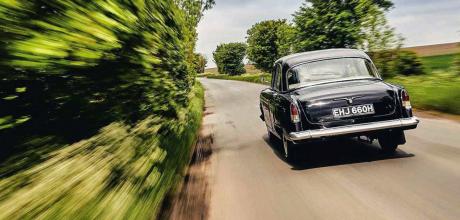
One man did more than most to highlight the Eastern Bloc car scene in Britain and across Europe, and the launch of this bookazine coincides unfortunately wth his passing. It seems fitting to dedicate this publication to Julian Nowill — a gentleman and a fount of Communist car knowledge; someone with whom I had hoped to speak and learn while compiling this guide and someone who will be missed by all who knew him. These pages will reflect his passion. I hope you enjoy the stories within.